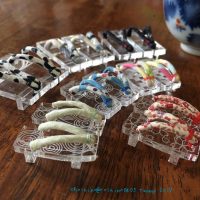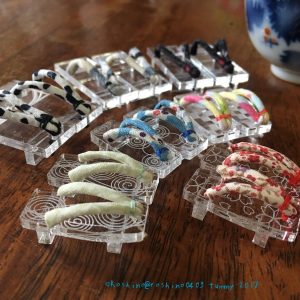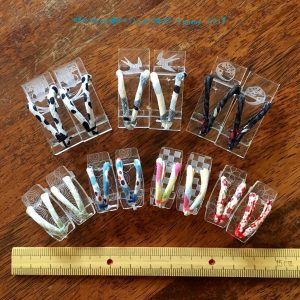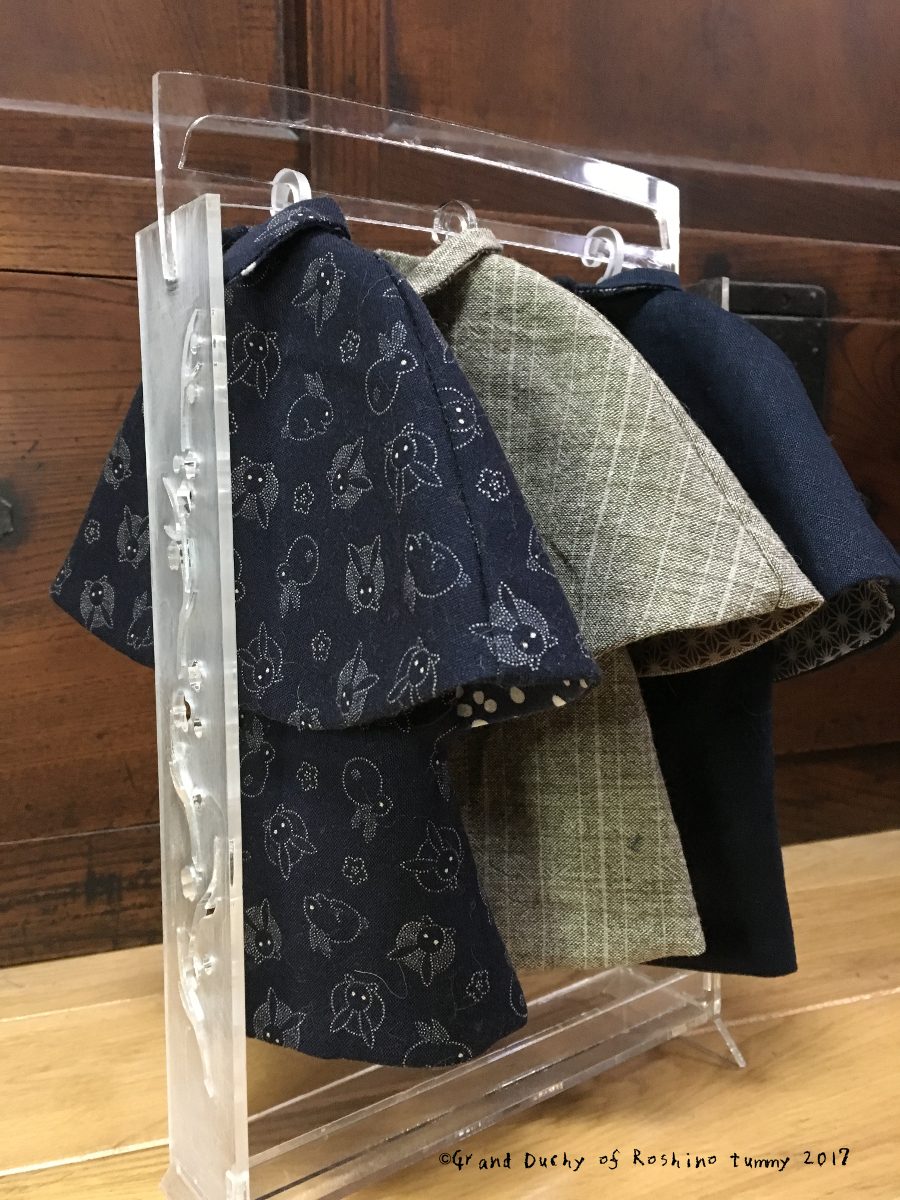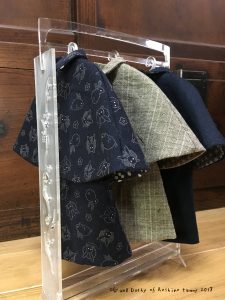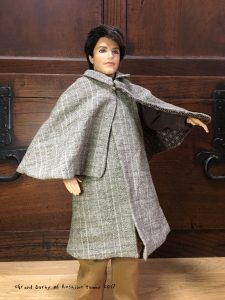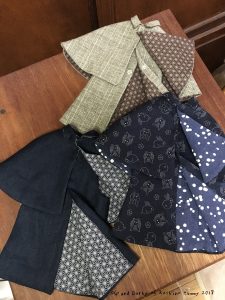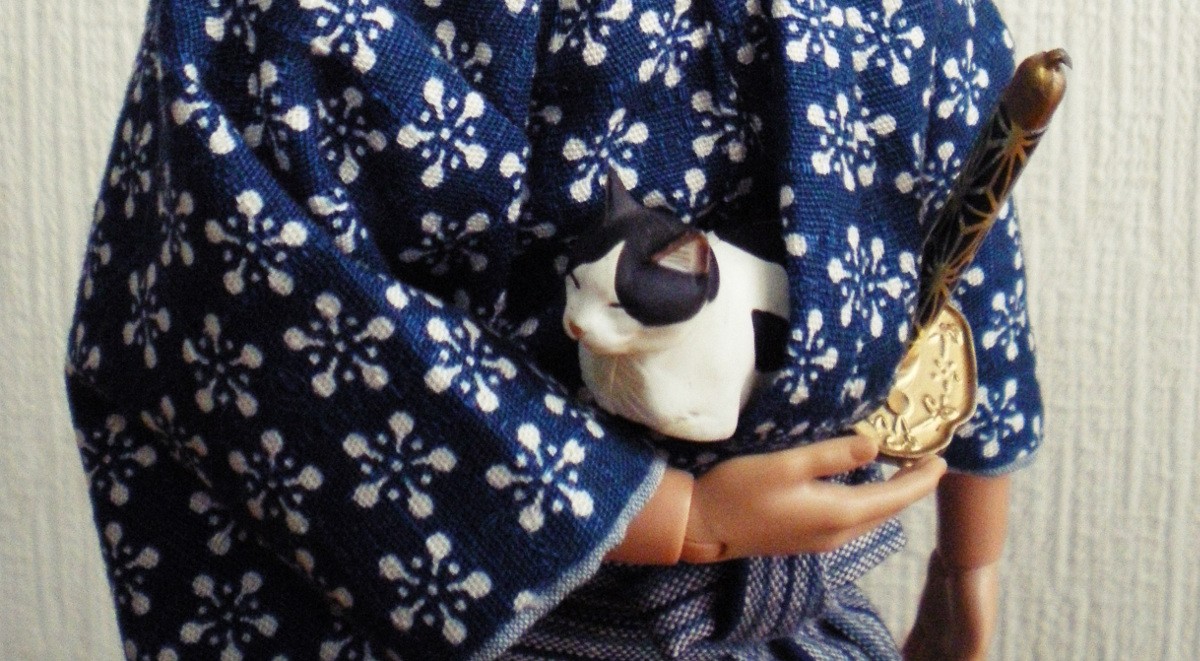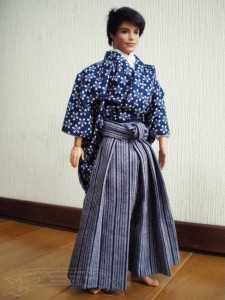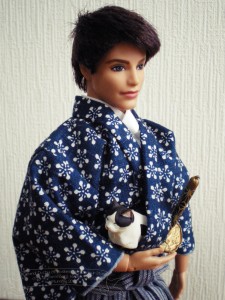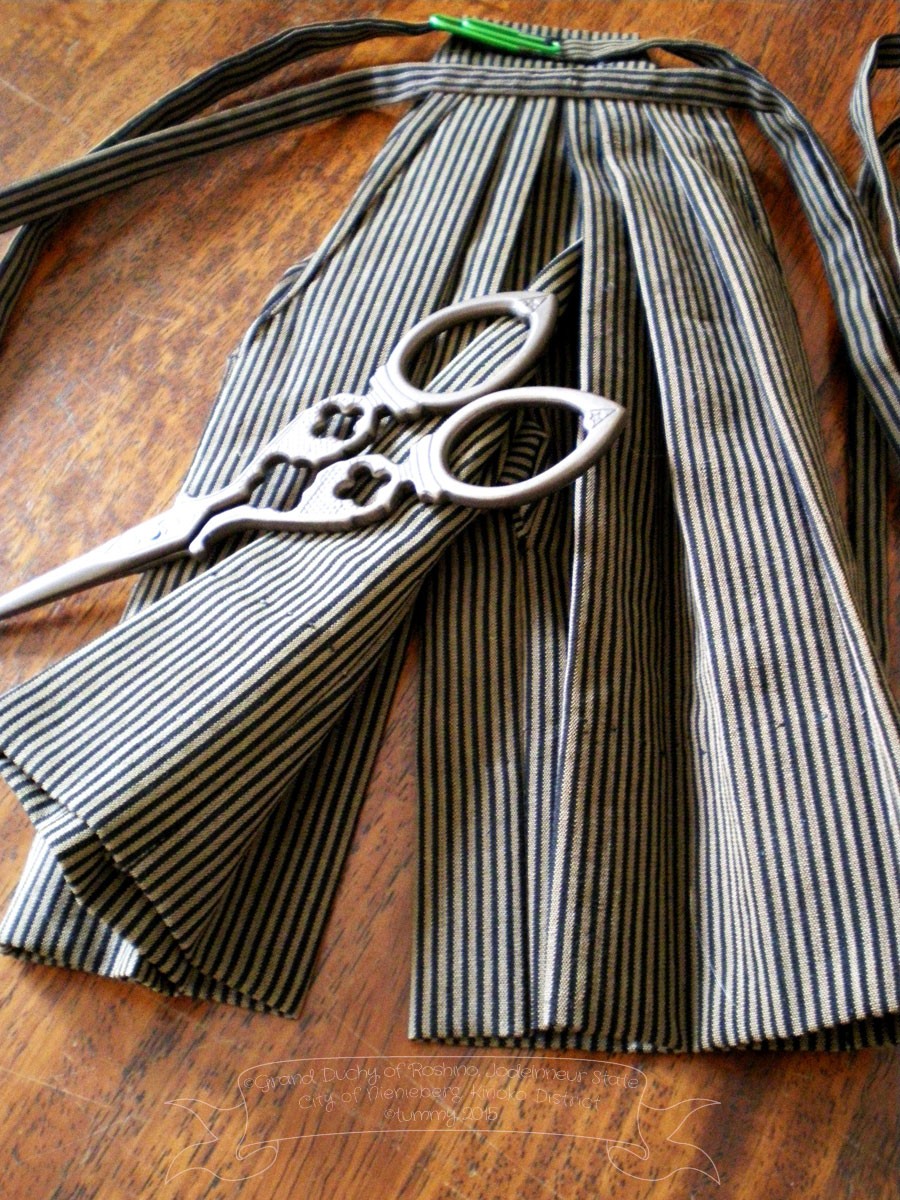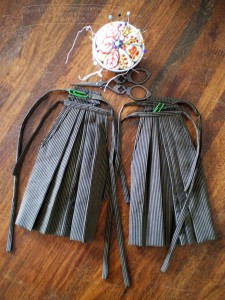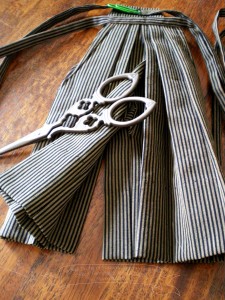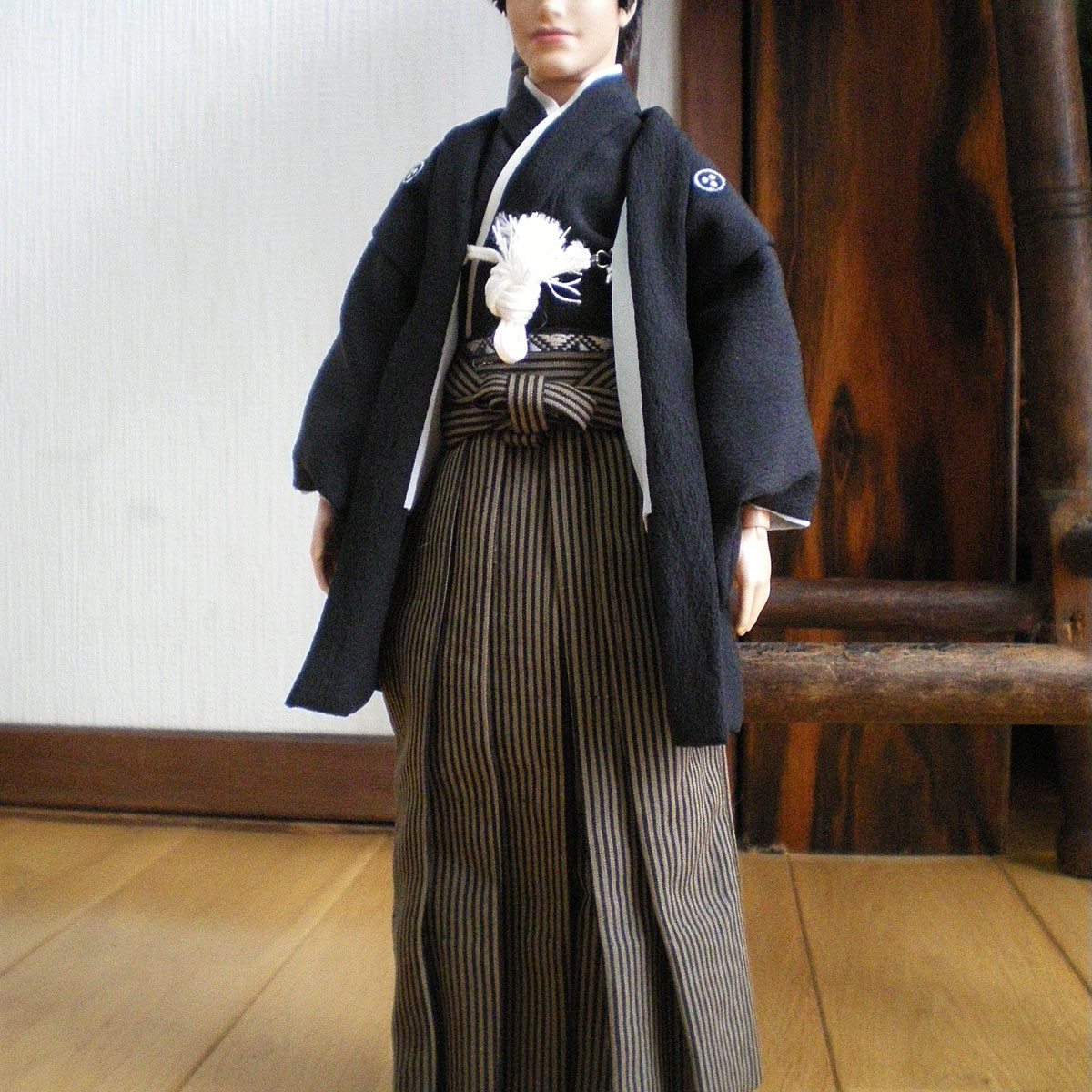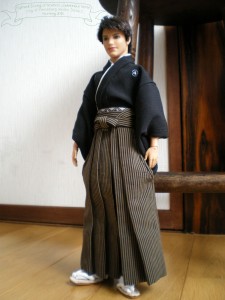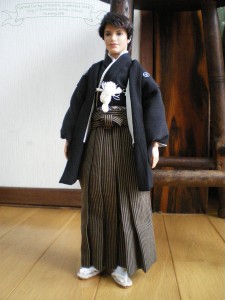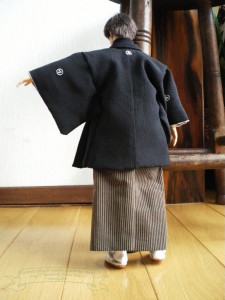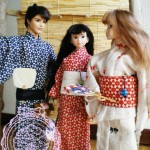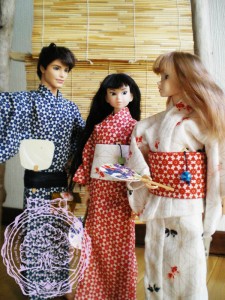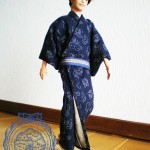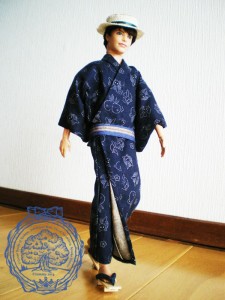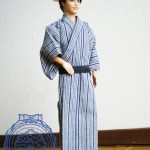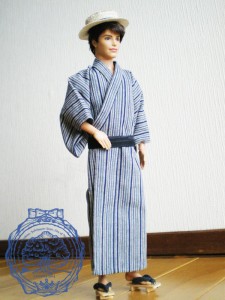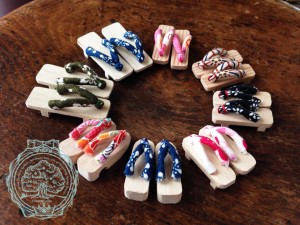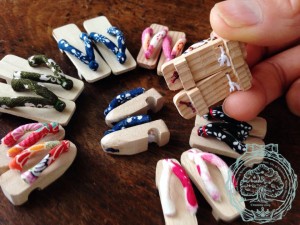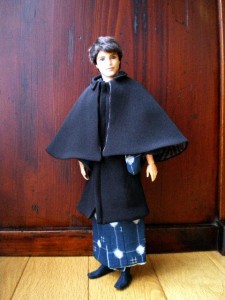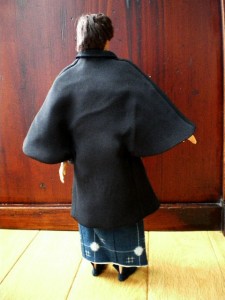Grand Duchy of Roshino, Jodelnneur State, City of Nienieberg, Kinoko District
ロシーノ大公国ヨーデルヌール州ニーニーベルグ市きのこ地区
1/6 Doll Size Men’s Tonbi Coat for Kimono by Roshino’s Ministry of Trade Garments Division ロシーノ貿易省服飾課謹製 1/6ドール用トンビコート
ロシーノ大公国貿易省では、さまざまな輸出品を取り扱っております。
1/6 ドール用の服飾品もその一つです。
こちらは、クラシカルな男性用のトンビコートです。
We, Roshino’s Ministry of Trade Garments Division carry
various products for export.
1/6 doll size garment is one of them.
This is men’s tonbi coat (Japanese sleeveless overcoat with cloak) for kimono.
主に和装の際に着て頂けますが、もちろん洋装にもどうぞ。
It is mainly for kimono but is also good for casual western clothing.
裏地も大事なおしゃれの要素です。
Note that the lining is important, too.
Hakama for 1/6 size dolls 1/6サイズドール用の馬乗り袴
お人形用の袴です。
Hakama for dolls.
足を入れる部分が二つに分かれている馬乗り袴があります。
There is two types of men’s hakama: one is called “Andon hakama”
which is a skirt-type (undivided), and the other
called “Umanori hakama” which is for horse-riding (divided legs).
襞の畳み方が左右対称ではないところが特徴です。
Umanori hakama is more masculine, so to speak.
It has a distinctive arrangement of pleats, that is asymmetrical.
Doll’s Kimono Montsuki Hakama 1/6サイズドール 紋付袴
着物と羽織の両胸と背中、両袖の後ろに紋が入ります。
これを「五つ紋」といいます。
長着に袴をつけます。
I made a kimono and hakama ensemble with family crests for 1/6 size doll.
It’s Japanese man’s formal attire.
Its kimono and haori have family crests on both sides of chest, back, and back of the sleeves.
They are called “Itsutsumon”, meaning five family crests.
First, put nagagi (ankle-length kimono) and hakama.
Then wear a haori over.
You can see where those family crests are on the back.
Doll’s Kimono Yukata for Girls & Boys momokoさんとケンの浴衣
ケンの紺の浴衣と中央のmomokoさんの浴衣は、同じ柄の色違いです。
右端のmomokoさんと中央のmomokoさんの浴衣は
帯と着物の生地を逆にしてみました。
Here you see a boy and a girl in matching yukata in different colors.
Navy blue yukata Ken is wearing and red yukata momoko is wearing
are the same print but in different colors.
Notice the obi momoko in the right is wearing is the same fabric
as yukata that momoko in the middle is wearing
and the obi in the middle is the same fabric
as yukata in the right.
Doll’s Geta – May 2014- お人形の下駄
材料の木は、赤松、桐、朴です。
左上の少し大きいものは、男の子のお人形用です。
I made 1/6 size doll’s geta.
Material used: Japanese red pine wood, paulownia wood
and Japanese bigleaf magnolia wood.
Bigger size geta on the top left are for boys.
The back also has similar structure to the one for humans.
1/6 Tonbi Coat: Men’s overcoat for kimono お人形のトンビコート
とんびコートは、着物の上に着るためのコートです。
I made tonbi coat for 1/6 size doll.
Tonbi coat is similar to the Inverness coat
putting on over kimono.
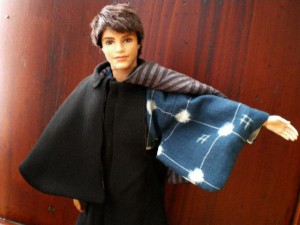 着物の袖が邪魔にならないように、ケープの下は袖がない作りになっています。
着物の袖が邪魔にならないように、ケープの下は袖がない作りになっています。
As you can see, it doesn’t have sleeves under the cape
it is because there are full kimono sleeves.
The back of the cape is a part of back body: it is one piece.
Come to think of it, I realized this tonbi coat is
much similar to the Inverness cape: the cape split in two and a small cape on
each side was sewn into the side seams
not taken across the back(*), but not exactly same.
*source from wikipedia: Inverness cape
